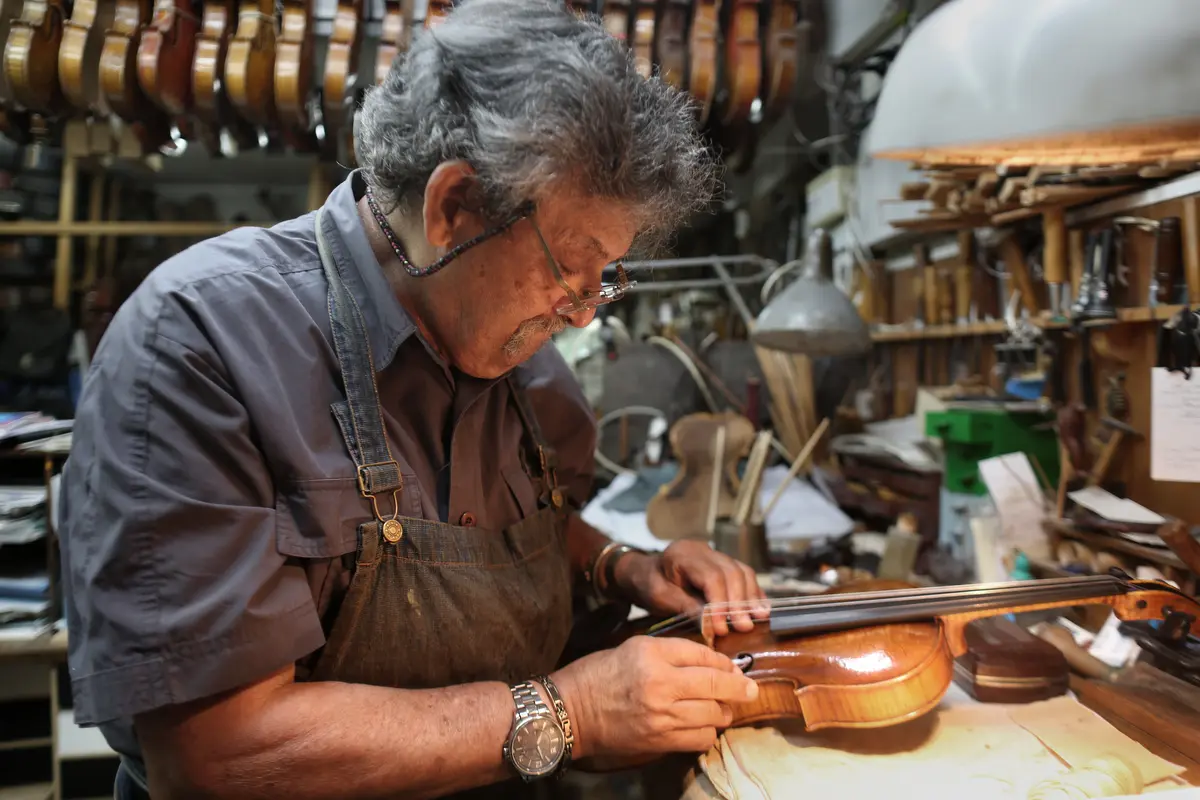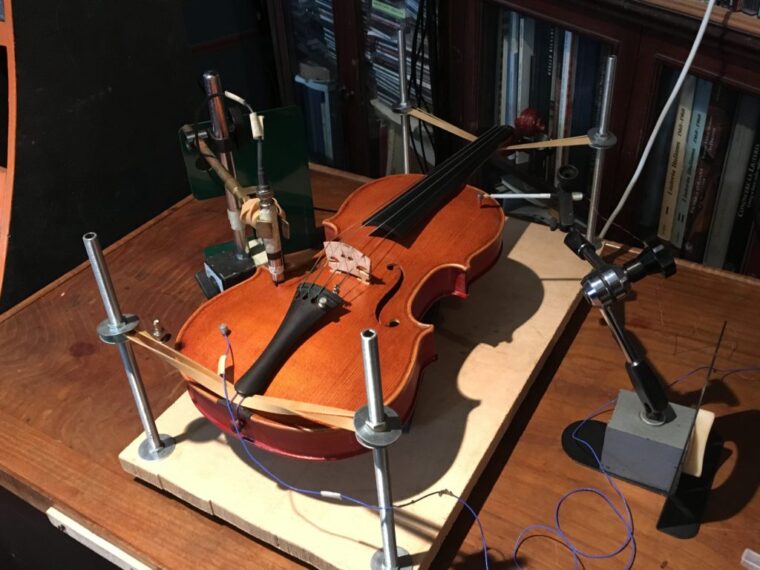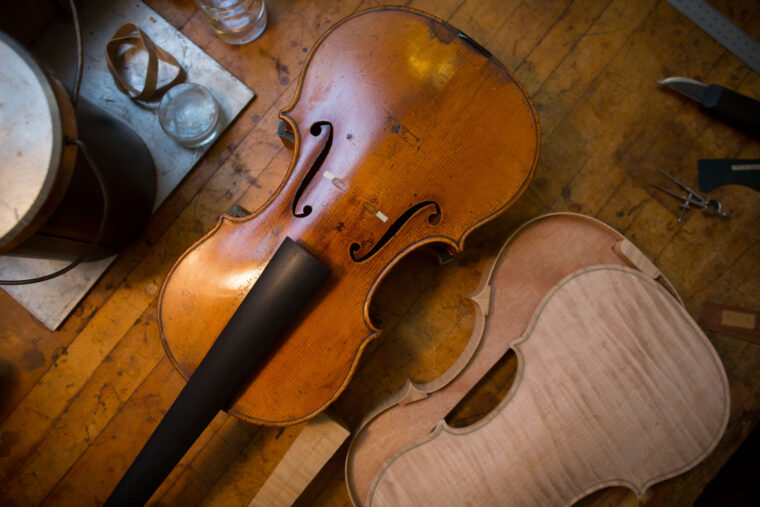The violin is renowned for its enchanting sounds, especially in classical music. It is an instrument that has captivated audiences for centuries. However, not all violins are created equal. What sets apart an exceptional violin from a mediocre one?
In this post, we delve into the intricacies of what makes a good violin, unraveling the secrets that contribute to its unparalleled resonance and playability.
Key Components

1. Body and Structure
At the heart of every great violin lies a meticulously crafted body and structure. The type of wood used, the thickness of the plates, and the arching of the instrument all play a crucial role in determining its quality.
Spruce and maple are used and favored for their acoustic properties, providing a harmonious balance between strength and flexibility. The top plate, or soundboard, is carefully graduated to ensure optimal vibration, while the back plate and sides contribute to the violin’s resonance. Meanwhile, the curvature, or arching influences the instrument’s tonal characteristics.
A good violin’s body is a harmonious combination of materials and craftsmanship, a testament to the luthier’s skill and understanding of the instrument’s physics.
2. Sound Quality

The violin’s sound quality is influenced by a multitude of factors, from the type of strings and bow to the instrument’s setup. For instance, the soundpost and bass bar, internal components of the violin, are carefully positioned to enhance resonance and tonal quality. The f-holes, intricately shaped, contribute to the projection of sound.
Moreover, a good violin possesses a unique voice, one that can resonate with the emotions of the musician and captivate the audience. The balance between warmth and brilliance, the depth of tone, and the instrument’s responsiveness are all essential elements that define the sound quality of a superior violin.
3. Craftsmanship

Craftsmanship is the glue that binds the key components of a violin together. The meticulous handwork of a skilled luthier transforms raw materials into a musical masterpiece.
There is the varnishing process, which is an ancient art that not only protects the wood but also influences the instrument’s resonance. Likewise, you’ll see that the attention to detail, precision in carving, and the luthier’s experience are reflected in the violin’s overall aesthetic appeal and playability.
Parts like the scroll, pegbox, and fingerboard are crafted with precision, contributing to the violinist’s ease of playing. Craftsmanship is the silent force that breathes life into a violin, elevating it from a mere instrument to a work of art.
Testing and Evaluation

The true worth of a violin is revealed through rigorous testing and evaluation. Professional musicians, with discerning ears, play a crucial role in assessing the instrument’s playability, responsiveness, and tonal characteristics.
There is a blind test, where musicians play various violins without knowledge of their origin. It provides unbiased insights into the instrument’s quality. Testing also involves evaluating the violin’s projection, dynamic range, and suitability for different musical genres. Only through meticulous testing can a violin be deemed worthy.
Conclusion
In the world of violins, excellence is not easily attained. A good violin is a masterpiece born out of a harmonious marriage between body and structure, sound quality, and craftsmanship. It is an instrument that transcends its physical form, resonating with the passion and skill of its creator. Aspiring musicians and seasoned players alike seek the secrets of what makes a good violin, recognizing that within its curves and strings lies the key to unlocking a world of sublime musical expression.

